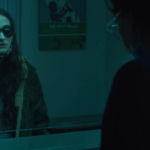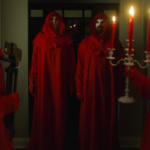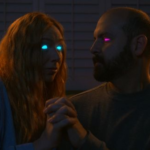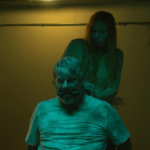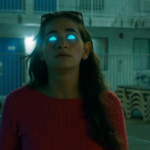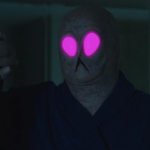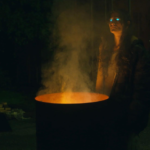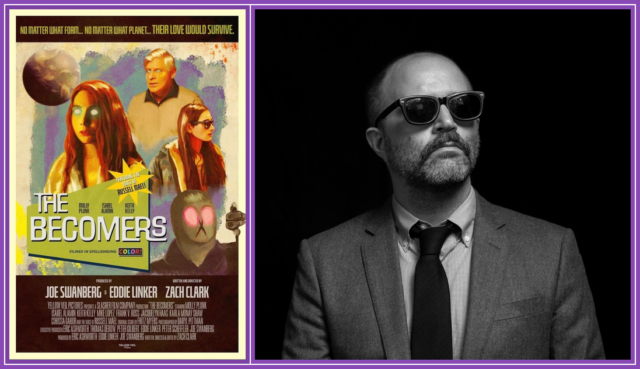
In this exclusive interview, Writer/Director ZACH CLARK dives into the “making of” his creative and entertaining new alien sci-fi film THE BECOMERS.
SYNOPSIS: Forced to flee their dying planet, two body-snatching alien lovers arrive separately on Earth. Determined to find each other, the aliens jump from body to body, but they quickly learn that it’s not easy to inhabit their new, fleshy hosts, and that life in modern-day America is more complicated than they could have ever imagined.
Written and Directed by ZACH CLARK, THE BECOMERS cast includes Molly Plunk, Mike Lopez, Keith Kelly, Isabel Alamin, and Frank V. Ross, with narration by Russell Mael, lead singer of the renowned musical duo Sparks.
Drawing upon his love of those beloved vintage science fiction films like Invasion of the Body Snatchers, ZACH CLARK was inspired to take the idea of alien body snatching but go deeper and with a twist, a big twist. In THE BECOMERS, the tension and suspense in the film is not just wondering which people will turn into aliens next or which bodies the aliens are choosing to inhabit. The bigger questions are how will the aliens deal with being “human” and what kind of trouble, danger, and surprises will those inhabited bodies encounter? But at the heart of it all are two alien lovers trying to find each other on Earth as each bounces in and out of various human bodies and the respective human lives of the bodies they have inhabited. The results are unexpected, funny, heartwarming, and yes, in some instances, beyond horrifying. But is it the alien reactions in human form that are horrifying? Or is it the activities of the human hosts and those around them that are the most terrifying and vicious? Stand-out is the subtext and the themes that speak to society today and yes, political bends as well.
Wonderfully quirky, THE BECOMERS is also quite sweet with the love story driving everything forward while Zach’s visual creativity (how about alien sex?) dazzles us with color, inventiveness, some shocks and fun, especially with the body-snatching moments. The vulnerability of our two alien lovers is wonderful to watch as they navigate earth and “humans” leading to a conclusion that is beyond endearing, delivering a message of hope and commonality among species. Production values are strong, notably with the sound design and mix as the aliens communicate through a sonic call, although they do learn and speak English while inhabiting a human body. Visual effects are wonderfully executed and used to their best effect.
Speaking with writer/director ZACH CLARK in this exclusive interview, we dove into the inspiration and creation of THE BECOMERS, highlighting its unique blend of love story and body snatching themes. Explaining the origins of the concept and influenced by the original “Star Trek” series and the sci-fi classic “Invasion of the Body Snatchers”, Zach emphasized the importance of maintaining audience sympathy for the aliens, despite their sometimes violent actions. As we dug deeper, and detailed the visual grammar and color palette used to enhance the story, he also described the collaborative process with his team, including VFX and sound design, reflecting on the challenges and lessons learned during production, including but not limited to:
- the color palette inspired by the vibrant Technicolor vision of the future presented in the original Star Trek; Zach wanted to associate neon or bolder colors with the aliens to differentiate them from the more muted, grounded world of the humans
- lighting was approached from the alien perspective, with fluorescents appearing very green and outdoor tungsten lights appearing very warm, in order to heighten the sense of an “alien eyes” perspective
- melding the color palette and lighting approach to create a visual esthetic that felt distinct from the typical science fiction movie, while still maintaining an internal logic to the alien world being depicted
- the visual effects for the aliens – adult aliens were designed by Brian Spears and Pete Gerner, who had previously worked with the director Zach on his last movie; the orifices and “goo” effects for the aliens’ mating scene; baby the design of the baby alien which required a more functional puppet
- overall VFX, including the alien eyeballs, were handled by Josh Johnson
- Fritz Meyers’ score which was influenced by late 70s/early 80s synthesizer music as well as more experimental bands and musicians; intentionally designed to always be from the alien perspective rather than evoking concern for the human characters; the goal was to worry more about the aliens than the humans; the romantic alien sex scene (and yes, romantic is the word) was scored as a genuine romantic love scene; the hauntingly beautiful alien vocal sounds which Fritz designed
- sound designer Max Phillips added drones and other sound effects taking inspiration from older sci-fi movies to create the sounds of devices and spaceships in the film
- working with cinematographer Daryl Pittman to develop the visual grammar; the use of eye-level shots and minimal close-ups to avoid casting judgment on the characters and their perspectives; experimenting with more framing and composition techniques, such as the establishing shots used in THE BECOMERS; make otherwise mundane shots more visually interesting; exploring ways to use camera placement and movement to emphasize the connections between characters, such as holding two-shots instead of cutting back and forth between close-ups; push the boundaries of visual grammar to create unique and compelling cinematic experiences that complement the thematic and narrative elements of their stories.
- the design of the aliens, including their sexual organs, as a guiding light during production
- importance of practical effects; practical and visual effects should feel organic to the storytelling
- incorporating themes of political skewering while maintaining focus on the aliens
- editing process involved a full cut of the movie six to eight months after the first shoot, with additional shooting six months later to address issues; the importance of making establishing shots interesting and avoiding the use of generic building shots to build pace
- the challenge of a quick turnaround from script to shoot with the movie shot in 14 days but then 6-8 months later he had to shoot for an additional 6 days to address issues that came up during the editing process
- and more!
TAKE A LISTEN. . .
by debbie elias, exclusive interview 08/21/2024

